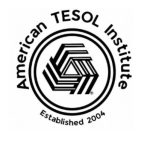When it comes to teaching history, or what we’ll call chronica, to English language learners, traditional methods of memorizing dates and names often fail to spark the necessary engagement. TESOL teachers can breathe new life into their lessons by rethinking how they approach the subject. By conceptualizing chronica as more than just a timeline of events and visualizing it as an interconnected story, TESOL educators can help students dive deeper into the language and context of historical events, while making the learning experience more immersive and enjoyable.
In this article, we’ll explore new ways to teach chronica, focusing on the use of language, visual aids, and storytelling to engage English language learners in this fascinating subject.
Why “Chronica” Instead of “History”?
The word history often brings to mind a rigid list of facts and dates, which may intimidate language learners. By introducing the concept of chronica, we shift the focus from rote memorization to storytelling, encouraging students to see historical events as interconnected stories that shaped the present. This subtle shift in terminology helps reframe the way students approach the subject, making it feel more dynamic and accessible.
1. Storytelling as a Teaching Tool
Chronica is full of incredible stories, from ancient civilizations to modern revolutions, and storytelling can be a powerful tool in helping students understand complex events. Rather than focusing solely on the factual side of history, TESOL teachers can introduce chronica through narrative techniques that bring events to life. For example, you might tell the story of a famous figure in history, such as Cleopatra or Napoleon, but frame it as a story filled with decisions, dilemmas, and human emotions.
Classroom Activity:
Ask students to retell the story of a historical event in their own words, emphasizing the actions and emotions of the characters involved. This not only helps with language acquisition but also builds their ability to summarize and explain concepts clearly.
2. Visualizing Chronica with Maps and Timelines
For visual learners, chronica can be made much more accessible through the use of maps, timelines, and other visual aids. By mapping out where events took place and organizing them chronologically, TESOL students can better grasp the cause-and-effect relationships between events.
Interactive maps that show movement over time—such as the spread of empires, trade routes, or migration patterns—are excellent tools for helping students visualize how different events are interconnected.
Classroom Activity:
Create a collaborative timeline with your class, where students can add events as they learn about them. Each event could include a short description, relevant images, and student-contributed content to promote ownership of the learning process.
3. Role-Playing and Dramatizing Historical Events
Nothing makes chronica come alive quite like role-playing. Assign students different characters or groups from a particular time period, and have them act out pivotal moments in history. This approach helps students practice English in a dynamic and memorable way, while also deepening their understanding of the events themselves.
For example, students could take on the roles of historical figures in the signing of an important treaty or recreate a famous debate or battle. Through this type of active learning, students gain a stronger grasp of both the language and the historical content.
Classroom Activity:
Hold a mock trial or debate based on a controversial historical event. Assign students roles as judges, lawyers, and witnesses, and encourage them to use historical facts and persuasive language in their arguments. This helps students practice formal English in a real-world context while deepening their understanding of chronica.
4. Using Technology to Explore Chronica
With modern technology, students can explore chronica in ways that were once unimaginable. Virtual reality (VR) and augmented reality (AR) tools can transport students to historical landmarks or significant events, giving them a firsthand look at the past. Likewise, educational platforms that include documentary videos, interactive exhibits, and audio guides make history much more engaging for English language learners.
Integrating technology into your TESOL classroom allows students to explore the world beyond the textbook. For instance, they could virtually walk through ancient Rome or witness the construction of the Great Wall of China. Not only does this provide a more interactive learning experience, but it also caters to different learning styles and makes chronica feel more real.
Classroom Activity:
Use VR or AR apps like Google Expeditions or Nearpod to take your students on virtual field trips to historic sites. After the virtual experience, have students discuss or write about what they saw, using new vocabulary they’ve learned in class.
5. Connecting Chronica to Present-Day Issues
Helping students see the relevance of chronica in today’s world is key to keeping them engaged. When teaching about past events, always make connections to current issues. For example, when teaching about colonialism, you could discuss its impact on modern-day global politics or economics.
By linking historical events to students’ own lives and countries, you make learning more personal and relevant, helping students develop both language skills and critical thinking.
Classroom Activity:
Ask students to research how a particular event from the past continues to influence society today. Have them present their findings in a short essay or group discussion, using new vocabulary related to the topic.
6. Building Language Skills Through Chronica
Chronica is a fantastic way to build language skills. By studying historical texts, speeches, and documents, students encounter different styles of writing, from formal to narrative, and learn to navigate complex sentence structures and advanced vocabulary. Encourage students to engage with primary sources—such as letters, speeches, and treaties—as a way to practice reading and critical analysis.
Classroom Activity:
Provide students with excerpts from famous speeches or historical documents, such as the Gettysburg Address or Martin Luther King Jr.’s “I Have a Dream” speech. After reading the texts together, analyze the language and have students rewrite sections using simpler vocabulary or modern expressions.
Conclusion: Reimagining Chronica for English Learners
Teaching chronica to English language learners opens up a world of possibilities for TESOL teachers. By reframing history as a dynamic, interconnected story and using innovative tools like storytelling, role-playing, and technology, you can help students gain both language proficiency and a deeper understanding of the world around them. As they learn the events that shaped their own lives and those of others, students will be better equipped to engage with the global community and express themselves in English with confidence.
Chronica is more than just a subject—it’s a gateway to understanding the past, present, and future. So, let’s help our students discover it in the most exciting and engaging ways possible!



